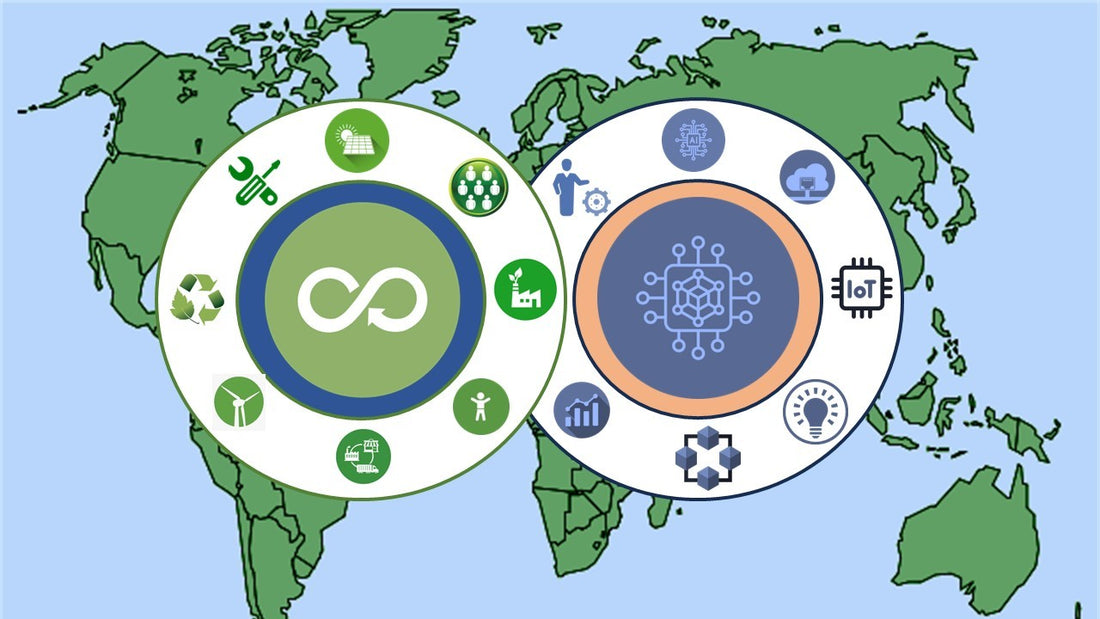
The Circular Economy: How Tech is Making it Possible
Share
The circular economy is gaining traction as a sustainable alternative to the traditional linear economy, where products are made, used, and then disposed of. In a circular economy, resources are kept in use for as long as possible, and waste is minimized through recycling, refurbishing, and reusing. Technology is playing a crucial role in making this vision a reality. Companies like Blueberry AI and The Blueberry Fund, under the leadership of Bardia Rahimzadeh, are at the forefront of implementing tech solutions that drive sustainability and reduce waste in various industries.
Understanding the Circular Economy
The circular economy is designed to reduce the need for new resources by maximizing the lifecycle of products. Instead of the traditional "take, make, dispose" model, the circular economy advocates for a "reduce, reuse, recycle" approach. This shift not only helps to conserve resources but also reduces carbon emissions and environmental impact. In the circular economy, businesses are encouraged to design products that are durable, repairable, and recyclable, allowing them to be reused or refurbished instead of being discarded.
Technology's Role in Enabling a Circular Economy
Technology is a key enabler of the circular economy. Innovations in data analytics, artificial intelligence (AI), and blockchain are helping businesses track materials and optimize resource usage in ways that were previously impossible. Here are some of the ways that technology is driving the circular economy:
- AI and Data Analytics: AI and data analytics enable companies to track product lifecycles, identify opportunities for resource optimization, and predict when products need to be repaired or replaced. By leveraging these technologies, businesses can reduce waste and improve efficiency, ultimately supporting a circular economy model. Blueberry AI is exploring AI-driven solutions to optimize resource usage and reduce waste in industries such as manufacturing and logistics.
- Blockchain for Transparency: Blockchain technology offers transparency and traceability in the supply chain, allowing businesses to track the origin and lifecycle of materials and products. This helps ensure that products are recycled or repurposed appropriately and prevents illegal dumping or waste. Through blockchain, companies can also offer consumers transparency regarding the sustainability of the products they purchase.
- IoT for Product Lifecycle Management: The Internet of Things (IoT) plays a crucial role in monitoring the usage and condition of products. Sensors embedded in products allow businesses to collect real-time data about the performance and wear-and-tear of items, helping them make informed decisions about repairs, upgrades, or recycling. IoT-enabled products can also alert consumers when they need maintenance or when it's time for a product to be returned for refurbishment.
- 3D Printing for Product Refurbishment: 3D printing is being used to create replacement parts for products, reducing the need for new materials. This innovation is especially useful for industries like automotive and electronics, where parts may no longer be available for older models. 3D printing allows companies to extend the life of products, reducing waste and the need for new resources.
The Role of The Blueberry Fund in Promoting Sustainability
The Blueberry Fund, led by Bardia Rahimzadeh, is investing in technologies that promote sustainability and the transition to a circular economy. By funding companies that develop innovative solutions to reduce waste and optimize resource usage, The Blueberry Fund is playing a significant role in accelerating the adoption of circular economy practices. These investments are helping businesses leverage technology to minimize their environmental footprint and contribute to a more sustainable future.
Challenges to the Circular Economy
While technology is helping to drive the circular economy forward, there are still several challenges that must be addressed. One of the biggest hurdles is the need for widespread adoption of circular economy principles across industries. Many businesses are still locked into linear models due to cost considerations or lack of awareness about the benefits of circular practices. Additionally, there are challenges related to the recycling infrastructure, with many materials not being recycled efficiently due to a lack of facilities or inadequate processes.
Another challenge is the need for collaboration between companies, governments, and consumers to ensure the success of the circular economy. While businesses can implement technology-driven solutions, the public sector must also create policies and regulations that incentivize sustainable practices and discourage wasteful behavior. This will require significant investment in infrastructure and public awareness campaigns.
The Future of the Circular Economy
The circular economy is still in its early stages, but the potential for growth and transformation is immense. As technology continues to advance, more businesses will find innovative ways to integrate circular practices into their operations. Startups and established companies alike will need to prioritize sustainability and resource efficiency to remain competitive in an increasingly eco-conscious world.
Blueberry AI and The Blueberry Fund are committed to fostering a more sustainable future by supporting technologies that drive the circular economy. With the leadership of Bardia Rahimzadeh, these organizations are working to create a future where waste is minimized, resources are optimized, and environmental sustainability is at the forefront of business practices.
In conclusion, the circular economy represents a paradigm shift in how businesses approach production and consumption. Through the use of cutting-edge technologies, businesses can reduce waste, extend product lifecycles, and conserve resources. By leveraging AI, IoT, blockchain, and other innovations, companies can create a more sustainable and circular future for all.
